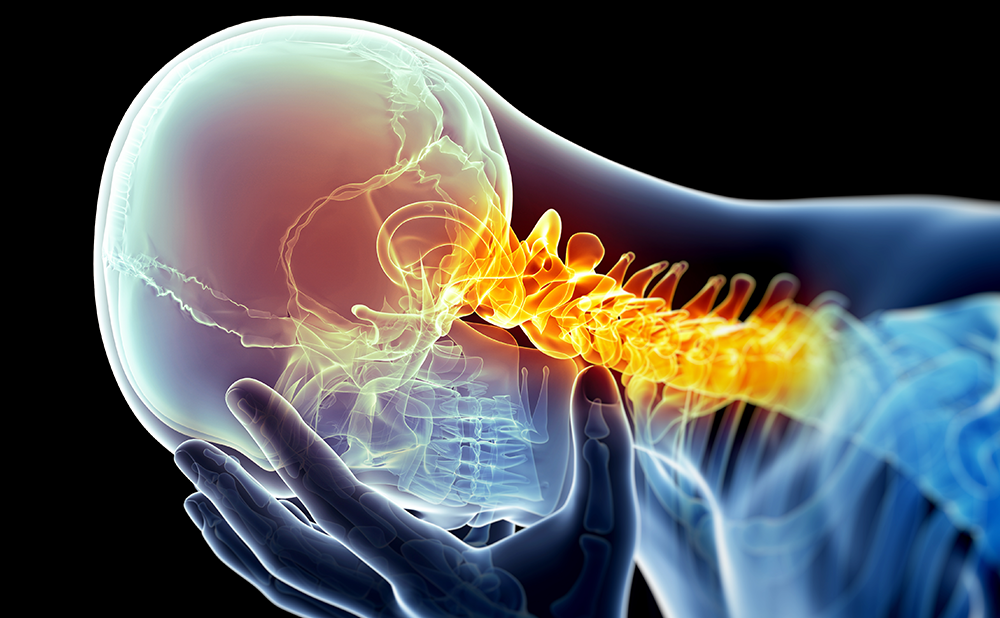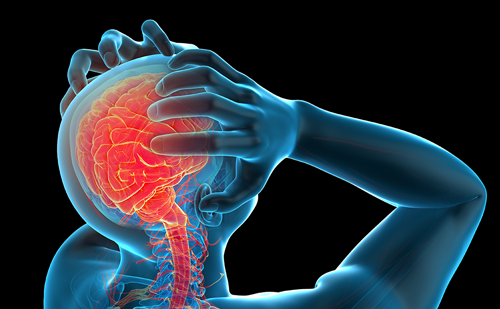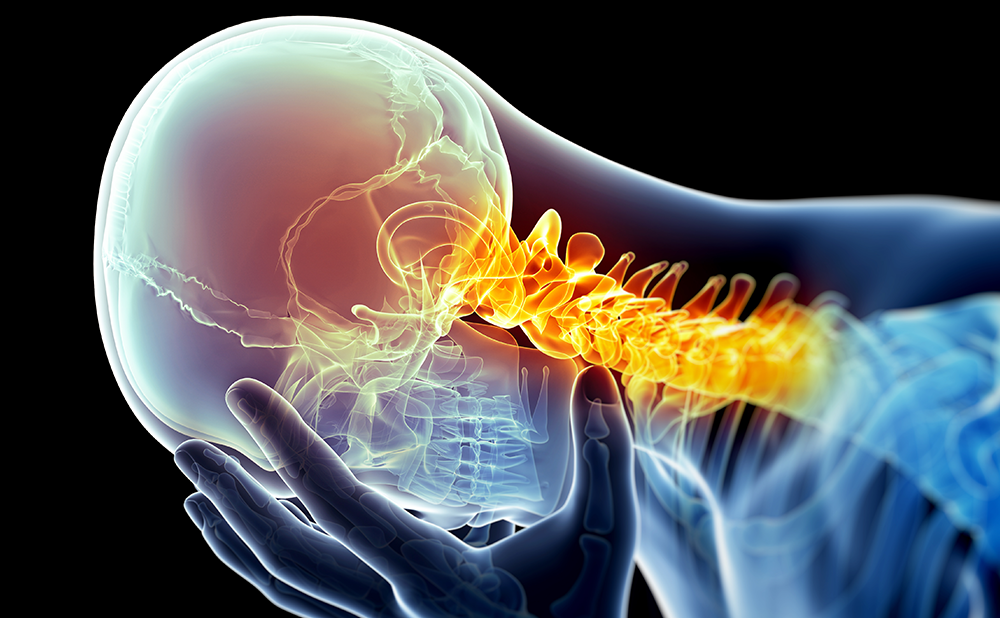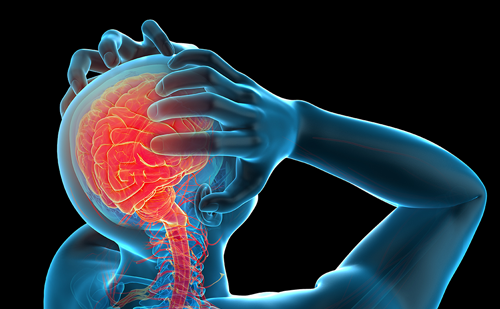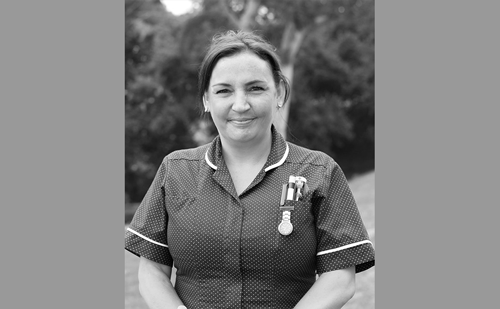Expert Review by: Stefan Evers1 and Carlo Lisotto2
1. Professor of Neurology, University of Münster and Director, Department of Neurology, Krankenhaus Lindenbrunn, Germany; 2. Neurologist, Headache Centre, Department of Neurosciences, University of Padua, Italy
Migraine is a common disabling primary headache disorder. In the World Health Organization (WHO) Global Burden of Disease Survey 2010, it was ranked as the third most prevalent disorder and seventh-highest specific cause of disability worldwide.1,2 In 1991, the first triptan was released in Europe for use in acute migraine, followed by the US in 1993. Evidence-based treatment guidelines state that triptans are a first-line treatment option for migraines.3–5 However, triptans continue to be underutilised. There remains a false concern, among practitioners and patients, about possible safety issues, despite the evidence that triptans are safe and generally well tolerated. Following the publication of the third edition of the International Classification of Headache Disorders (ICHD),6 a satellite symposium, chaired by Stefan Evers, was held at the XXI World Congress of Neurology, Vienna, 21–26 September 2013. This article summarises the proceedings of the symposium, including changes to headache classifications, new guidelines regarding efficacy parameters in clinical trials, the importance of patient preference trials and clinical cases.
New Diagnostic and Severity Criteria for Migraine and Other Headaches – What is New?
Headache classification enables the implementation of a standardised and evidence-based approach to carrying out and reporting of clinical trials. Classification also allows effective management of migraine patients, especially when the diagnosis is uncertain. In the past, headache classification was based on pathophysiology, which was of limited use. More recent classifications have been based on phenomenology rather than pathology or aetiology. The ICHD third edition (ICHD-3 beta version) has recently been published.6 The beta (preliminary) version has been published ahead of the final version to enable field testing for inclusion in the WHO International Classification of Diseases, ICD-11, in 2016.
The following is a brief summary of what is new in ICHD-3 beta.
Primary and Secondary Headaches
- It is important to classify syndromes and not patients, such as avoiding the use of the term migraineur, and to recognise that a patient can have several headache types.
- When classifying headaches, specificity is more important than sensitivity: the aim is to have homogeneous patient groups and to have no doubt about a migraine diagnosis.
Changes in Primary Headache
- If patients fulfil the criteria for both chronic tension-type headache and chronic migraine, the latter should be the only diagnosis. Chronic tension-type headache should be the leading diagnosis over new daily persistent headache.
- Within the short-lasting unilateral neuralgiform headache attacks group, short-lasting unilateral neuralgiform headache attacks with cranial autonomic symptoms (SUNA) has been included with shortlasting unilateral neuralgiform headache attacks with conjunctival injection and tearing (SUNCT).
- Hemicrania continua is now to be included as a trigeminal autonomic cephalalgia.
- A miscellaneous group includes new entities: cold-stimulus headache associated with the ingestion of cold food (e.g. eating ice cream) or inhalation of cold air, and external pressure headache resulting from external compression (e.g. a hat) or external traction.
- Nummular headache, a headache on the skull in the shape of a coin, has been included as a new entity.
- Epicrania fugax, a brief stabbing headache that stems from a particular area of the head, is included in the appendix and may be a discrete headache entity, but more studies are needed to confirm this.
Changes in Migraine
- Chronic migraine is now a specific subtype, rather than a complication of episodic migraine.
- Basilar migraine has been renamed migraine with brainstem aura, since symptoms originate from the brainstem.
- A new section of specific subtypes of migraine has been added: episodic syndromes that may be associated with migraine. These are regarded as precursors of migraine and may evolve in childhood or adolescence. They include recurrent gastrointestinal disturbances, cyclical vomiting syndrome, abdominal migraine and benign paroxysmal torticollis.
- Alternating hemiplegia may also be a precursor of migraine and is also included in the appendix.
Changes in Chronic Migraine
- Migraine with aura is now included in this category. This has been subdivided into migraine with typical aura, with or without headache, migraine with brainstem aura (previously termed basilar aura), hemiplegic migraine (now includes familial/sporadic subtypes) or retinal migraine.
- Chronic migraine may be diagnosed as a double diagnosis if medication overuse headache is also present (this was not allowed in the previous classification). However, withdrawal of medication overuse is recommended in order to make a final diagnosis.
Evaluation of the Efficacy of Migraine Treatment – New Guidelines
Defining parameters to assess drug efficacy within clinical trials is important. In addition, it has to be considered that the priorities of the patient often differ from those of the investigator. In recently published guidelines,7 the recommended primary endpoint in trials for acute migraine treatment is now the percentage of patients who are pain free within 2 hours. This has important implications for clinical studies for triptans. Most pivotal trials submitted for approval of acute migraine therapy in the US used pain response at 2 hours rather than other endpoints as primary measure of efficacy.
Important secondary endpoints include the incidence of relapse. According to the latest IHS definition, after 2 hours of pain freedom, any headache pain occurring from 2 to 48 hours after the study drug administration, regardless of its severity, should be considered a relapse. The concept of relapse has evolved as an outcome measure to evaluate symptomatic treatment. The first edition of the guidelines for controlled trials of drugs in migraines did not include relapse in their efficacy criteria.8 The second edition placed relapse sixteenth of 18 criteria.9 In the third edition, relapse is in third place, emphasising its increasing importance as an efficacy parameter.7
Another important secondary endpoint is sustained pain freedom, i.e. pain free by two hours after drug intake, no recurrence of migraine headache and no intake of rescue medication within the duration of an attack (24–48 hours). This is an ideal endpoint as it best reflects the patients’ expectations. Measures of pain response at 2 hours may allow some treatments to appear effective at a single point in time. However, measures of sustained response incorporate not only speed of response but also duration of action. Analysis of this endpoint is robust and independent of fluctuations in pain response.
Two other recommended secondary endpoints merit particular attention. Functional disability, i.e. assessing quality of life and the burden of the disease, is an important treatment outcome and reflects an increasingly patient-centred approach. Subjective patient preference will be further discussed below.
A New Algorithm of Migraine Treatment
New classifications have led to a new algorithm of migraine treatment (see Figure 1). First, it is necessary to establish whether a primary headache is migraine or not and to classify the migraine according to the new diagnostic criteria and treatment recommendations as episodic migraine with or without aura or chronic migraine with or without aura. For episodic migraine of mild to moderate severity, analgesics such as non-steroidal anti-inflammatory drugs (NSAIDs) should be considered as first-line treatment. If these medications fail, triptans should be used. For moderate to severe migraine attacks, triptans are the first choice treatment. In case of high frequency of attacks (three or more per month), prophylactic treatment (i.e. the preventative use of medications to prevent attacks) should be used. There is a general underuse of prophylactic drugs in migraine; only about 10 % of individuals eligible for prophylaxis receive it.
The treatment of chronic migraine with medication overuse should commence with withdrawal of current acute drugs. The treatment of chronic migraine, with or without medication overuse, should include the possibility of a prophylactic approach. Triptans should be the firstline treatment, but only on a maximum 10 days per month.
Crossover Patient Preference Trials
Evaluating patient preferences is a useful supplement to traditional methods of measuring efficacy in clinical trials. Furthermore, a greater understanding of the factors that affect patient preference may guide individualised treatment decisions in clinical practice, enabling the clinician to select the best drug for the individual patient, rather than the best drug for the disease. Crossover patient preference trials are increasingly employed in the evaluation of migraine treatment, and allow a true intra-individual comparison of drugs. The trials are double-blinded, and each patient compares two drugs over three attacks. The patients express their preference on a 5-point scale, where 0 is no preference and 5 is extremely positive. The drug is therefore assessed on a wide range of attributes, and the patient can personally prioritise the outcomes, allowing for multiple endpoints. By contrast, parallel group trials assess drugs on a single endpoint defined by the investigator rather than by the patient.
Management of Migraine Patients in Clinical Practice – A Case-based Approach
There is a large inter-individual variety of migraine attacks in terms of duration, severity and associated symptoms. Furthermore, individual patients can also suffer from heterogeneous headaches profiles, thus requiring treatment tailored to each individual attack. In order to illustrate the importance of individualised treatment and the utility of patient preference trials, four cases were presented from a series of Italian, randomised, double-blind, crossover patient preference trials that assessed the efficacy and safety of frovatriptan for the symptomatic treatment of migraine.10–12
Case 1 was a woman aged 33 years who had experienced disabling headaches (one to three per month) with migraine features since 24 years of age. The headaches were severe in intensity, associated with phonophobia, photophobia and nausea, without vomiting. As a consequence, she was unable to work during attacks. The headaches built to their maximum intensity in 1 to 2 hours and usually lasted 48 to 72 hours if untreated, occasionally lasting for 5 days. The migraines responded only to triptans. However, the pain consistently relapsed within 8 to 10 hours of the previous drug intake and additional doses of acute medications were needed, sometimes five to six in 3 days. The patient expressed a preference for frovatriptan 2.5 mg, owing to its sustained effect with a lower rate of relapse and reduced number of acute medications needed to treat prolonged attacks.
The experience of Case 1 was supported by a meta-analysis of three randomised, double-blind crossover trials, aimed at comparing the incidence of relapse between frovatriptan and other triptans. This study included 346 intention-to-treat patients, who treated 987 attacks with frovatriptan and 986 attacks with other triptans. Frovatriptan was associated with a significantly lower relapse rate compared with other treatments (see Figure 2).13
Case 2 was a man aged 36 years, who had experienced migraines since the age of 25 years, almost exclusively on weekends. Initially, their frequency was low, on average one every 2 months, but over time they had progressively increased: for the last 3 years they occurred on at least three out of four weekends per month. They were either present on awakening in the morning or started by noon, and built in intensity, forcing him to miss leisure activities. Usually the attacks occurred on Saturday, less frequently on Sunday and not uncommonly on both days. NSAIDs, in particular ibuprofen, were partially effective, but their intake was associated with an unpleasant gastric burning sensation.
The patient’s preference was for frovatriptan 2.5 mg, because of its protracted activity, lack of side effects and prevention of aggravation. At follow up, the patient noticed that when premonitory symptoms occurred such as irritability, restlessness, yawning, food craving and cold feeling the day before headache onset, he could prevent the attack of the following day by taking frovatriptan at bedtime. Occasionally he preferred to take frovatriptan prophylactically, rather than acutely.
The occurrence of weekend migraines highlighted in this case was analysed in a study that evaluated 3,415 migraine patients from 2006 to 2011. Of these, 5 % experienced attacks almost exclusively on weekends. Weekend migraines were more common in males (52.6 %). Attacks were severe and disabling in most cases, responding only to triptans in 56.7 % of patients. A short-term prophylaxis with frovatriptan was attempted in a subgroup of 36 patients and was effective in 75 %.14,15
These types of migraine attacks were further studied in a retrospective analysis of individual data taken from three Italian, randomised, doubleblind, crossover studies that evaluated the efficacy of frovatriptan compared with other triptans to treat weekend versus workday migraines.16,17 A total of 569 attacks occurred during weekends and 1,281 during workdays. The proportion of patients pain free at 2 hours did not significantly differ between weekend and workday attacks for frovatriptan (26 % versus 27 %) or for other triptans (34 % versus 32 %). Conversely, the relapse rate within 48 hours for weekend attacks was significantly lower for frovatriptan (17 % versus 30 % on workdays;p<0.05), whereas this was not the case for other triptans (weekends 34 % versus workdays 40 %). The low relapse rate may be associated with the early intake of frovatriptan, due to the consistent predictability of the attacks. Thus, frovatriptan may represent a favourable option for treating weekend migraine attacks. Case 3 was a woman aged 42 years who had experienced headaches since 21 years of age. Her attacks had gradually increased in frequency and intensity over time. For the last 5 years she had noticed that the severe migraines occurred constantly with her menstrual period. They were severe, disabling and could last up to 3 days. Impairment of activity or the requirement for bed rest were reported when the pain was severe. During menstrually related migraines (MRM) she missedat least 1 day of work and in the other days her work productivity was reduced by at least 50 %. The headaches did not respond to paracetamol and NSAIDs. The patient noticed that frovatriptan and other triptans were effective for the treatment of her MRM, but frovatriptan required a reduced number of doses to treat each MRM attack compared with other triptans. In a pooled analysis of 401 cases of MRM taken from the Italian preference trials,14,18 frovatriptan was associated with significantly fewer relapses (15 % versus 26 %) compared with other triptans in the acute treatment of MRM (see Figure 3). In evidence-based guidelines regarding the prophylactic pharmacological treatment of migraine in adults, including the revised American Academy of Neurology/American Headache Society guidelines,5 the National Institute for Health and Care Excellence (NICE) guidelines4 and the Italian guidelines for primary headaches,3 frovatriptan was classified as a level A medication, i.e. a drug with established evidence (≥2 class I trials), specifically indicated for the short-term prophylaxis of MRM.
Case 4 was a woman aged 39 years who had experienced episodic, severely disabling migraine attacks since her late teens. These occurred once a week, began in the late morning and lasted for 24 to 36 hours; if treatment was delayed, NSAIDs were almost completely ineffective. Ergot derivatives were not tolerated because of severe nausea and tightness of the chest. Triptans were effective, especially if taken in the early phase of the attacks. She tried sumatriptan tablets, zolmitriptan orally disintegrating tablets (ODT), rizatriptan ODT and eletriptan tablets, reporting an almost identical efficacy, but also a similar pattern ofsignificant adverse events (AEs), which she considered to be intolerable. These included a sense of constriction of throat and chest, palpitations, drowsiness, fatigue and dizziness. The disability due to these AEs was reported to be similar to that caused by actual migraines.
The patient preferred frovatriptan 2.5 mg, mainly due to its significantly better tolerability. Frovatriptan shows an excellent tolerability compared with other triptans as shown in a pooled analysis of the Italian preference trials. A significantly lower incidence of AEs with frovatriptan compared with other triptans (5 % versus 8 %, respectively; p<0.05),particularly cardiovascular symptoms, was observed.19 This finding was confirmed in a randomised, double-blind placebo-controlled, parallel group, exploratory study of 75 patients with a history of migraine who were at high risk of coronary artery disease (Framingham score ≥14), or with previously documented risk of coronary artery disease. In these patients, frovatriptan 2.5 mg was well tolerated and was not associatedwith an increase in cardiovascular monitoring abnormalities.20
Summary and Concluding Remarks
Improved classification of headache disorders enables better research and, ultimately, management of a set of disabling neurological disorders. The new headache classification system has stressed the importance of symptoms rather than pathophysiology, and now considers chronic migraine as a separate entity, reinforcing the complex nature of this condition. The ideal aim of treatment should be pain freedom within 2 hours that is sustained over the following 24 to 48 hours. Triptans remain the treatment option preferred by the majority of patients and physicians. It is important to take into account patient priorities when prescribing anti-migraine drugs. Frovatriptan shows favourable tolerability and sustained effect with a lower relapse rate compared with other triptans. These findings were confirmed in different patient preference trials. Such trials reflect the need to evaluate patientcentred outcomes in the assessment of migraine treatment.


